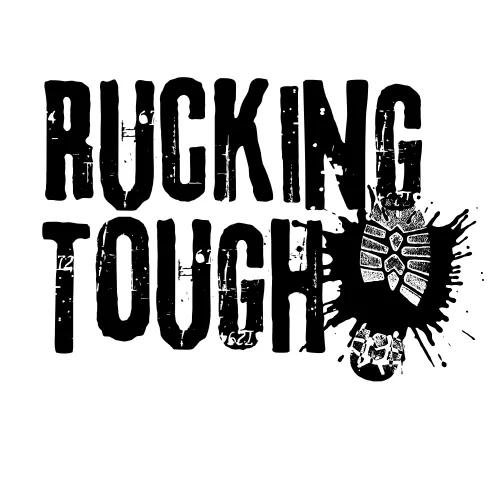ABOUT OUR RUCKS
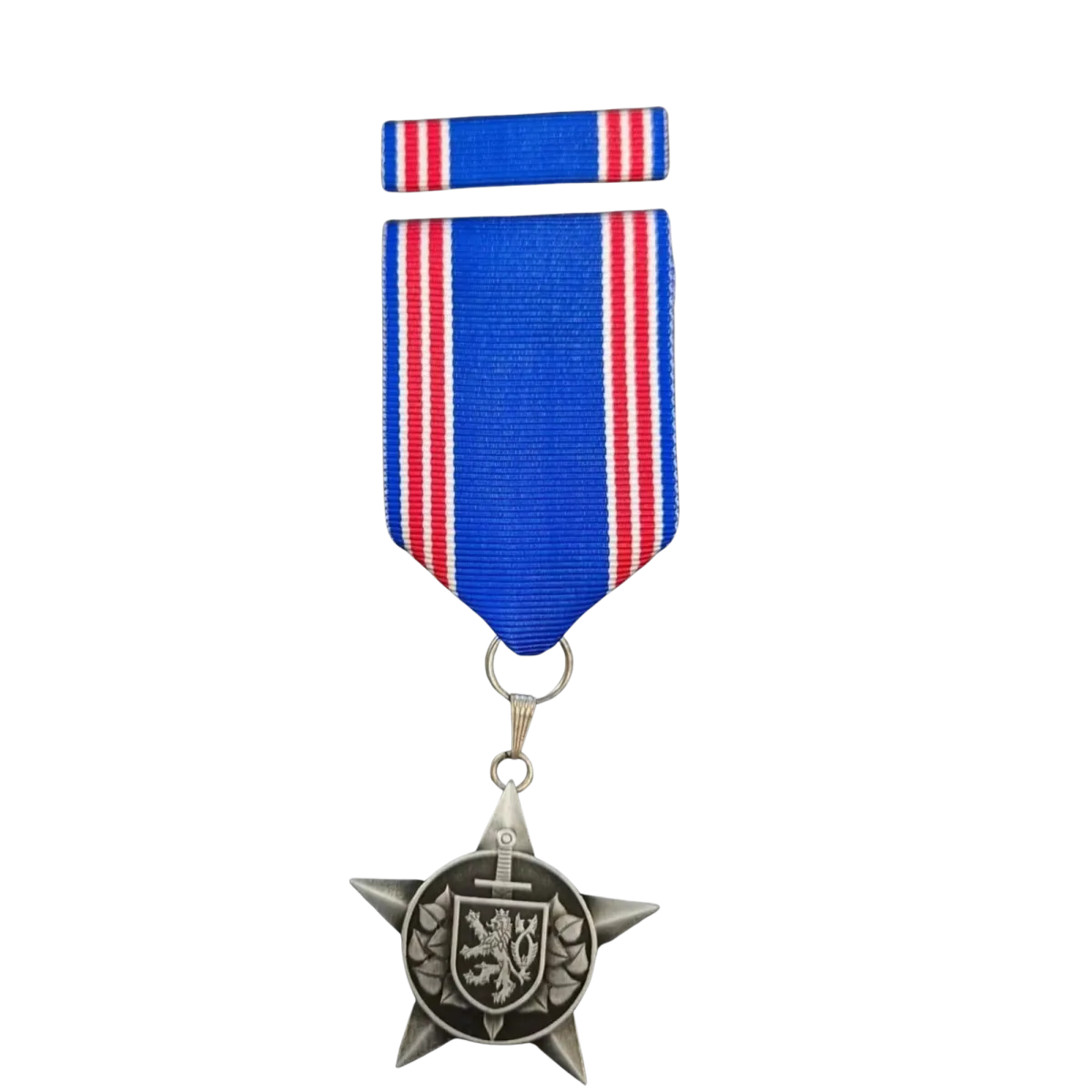
Czech
Military Marche
The Military March Medal is awarded in connection with the annual Victory Day commemorations. Its design reflects the history of World War II and the liberation of Czechoslovakia from Nazi oppression.
Obverse (front):
The central motif is a five-pointed star, recalling the white and red insignia used on U.S. and Soviet military equipment during the liberation. At the center sits a two-tailed lion on a shield, crossed by a downward-pointing sword—symbolizing Czechoslovakia’s prepared but unrealized defense during the Munich betrayal. The shield is surrounded by rising linden leaves, representing the strength and unity of the nation in its darkest days.
Reverse (back):
The design shows two concentric circles divided into four quadrants, symbolizing the post-war division of enemy territory among the four Allied powers. Within each section, linden leaves represent Czechoslovak soldiers who served in those armies. At the center is the victorious year, “1945.”
Ribbon:
The ribbon is 38 mm wide and carries three colors:
Blue for hope that such conflict will never return,
Red for the blood sacrificed by victims of the war,
White for peace.
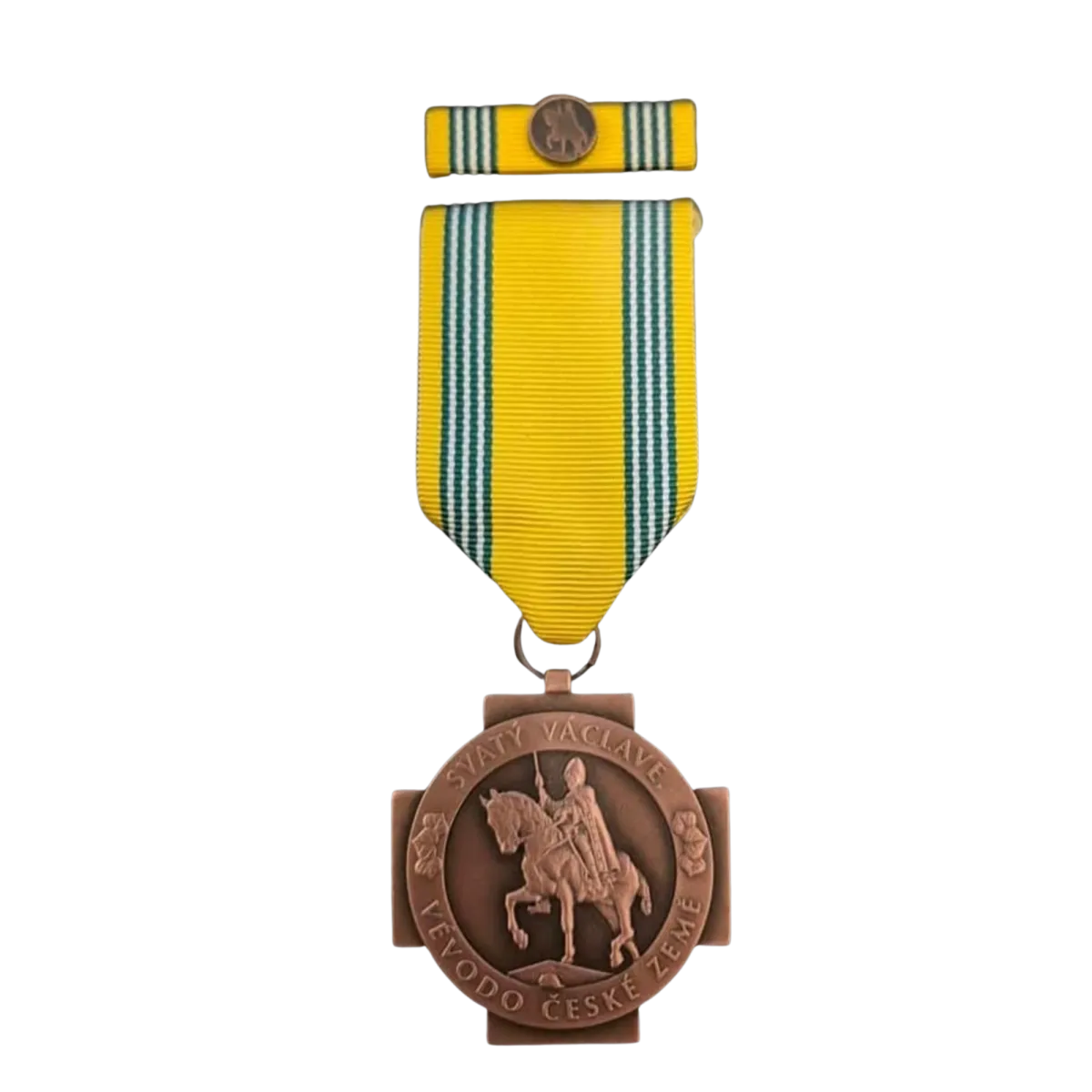
Czech
Statehood Marche
This badge is awarded in connection with the annual march held on Czech Statehood Day, commemorating the death of Saint Wenceslas. Its design reflects the knightly traditions honored by this revered monarch. The central motif is a Greek knight’s cross, framed by two concentric circles.
Classes of Award:
Participation is recognized in three stages:
1st–3rd participation earns the 1st Class Badge, presented in three finishes:
Heraldic Old Bronze (copper)
Heraldic Old Silver (zinc)
Heraldic Old Gold (brass)
Obverse (front):
The outer circle bears the most famous line from the Saint Wenceslas hymn: “Saint Wenclav, Duke of the Czech Land.” This inscription is divided at the center by linden branches, symbolizing the state tree. The inner circle depicts the equestrian statue of Saint Wenceslas in Wenceslas Square, the gathering place of the Czech people in times of trial and historic decision.
Reverse (back):
The outer circle continues the hymn: “Do not let us or our descendants perish.” The inner circle is divided into four sections by linden branches forming an equilateral cross. Within the quadrants appear alternating lions and eagles, traditional heraldic emblems of the Czech lands and principalities. At the very center is a space reserved for engraving the badge’s serial number.
Ribbon:
The ribbon is 38 mm wide. Its colors are inspired by the materials of the headband placed on the skull of Saint Wenceslas, crafted in 1929 by the Grünfeld company to mark the thousandth anniversary of his death. The headband is made of gold mixed with copper and silver (golden tone), adorned on each side with four malachite ornaments (green) and pearls (white with a soft gray hue).
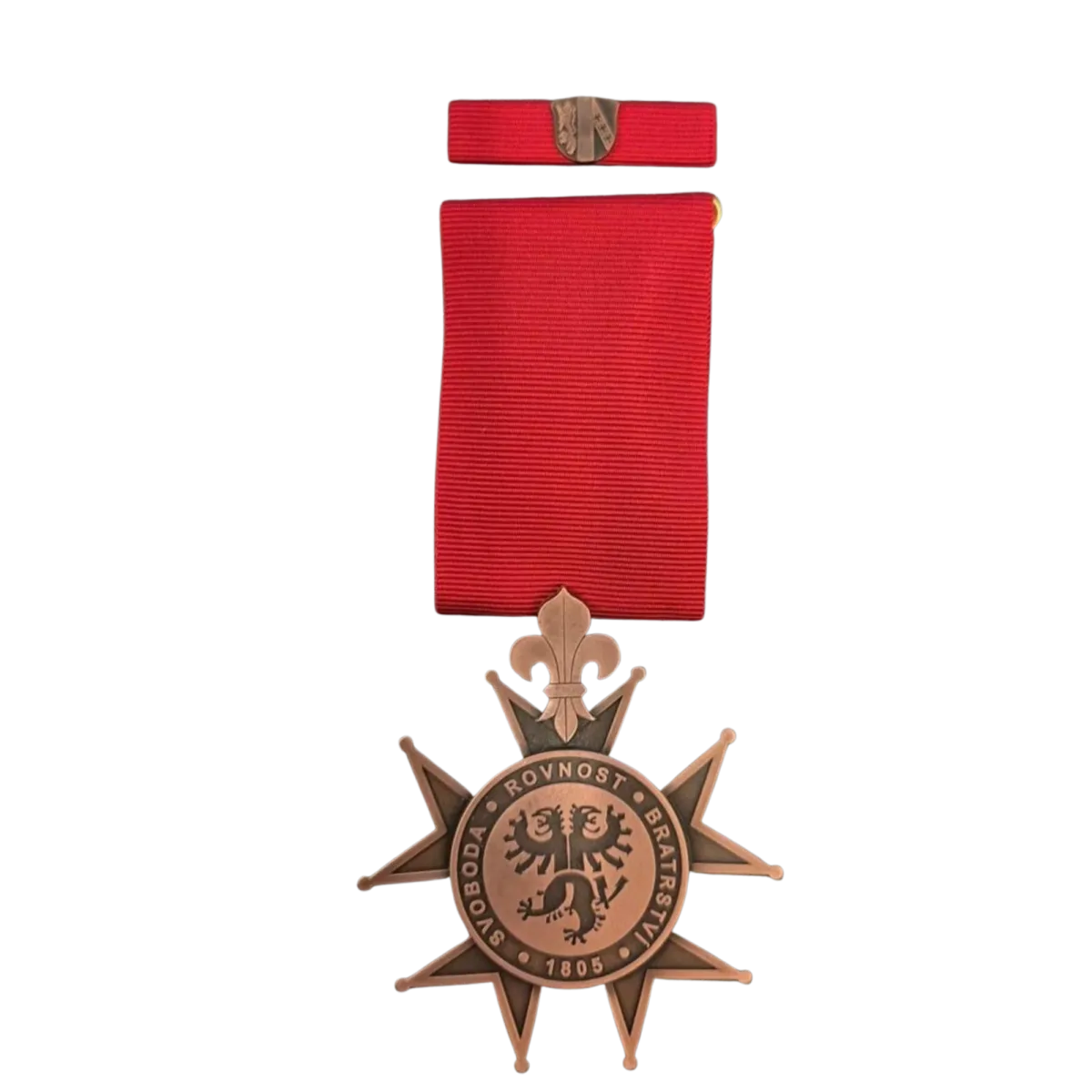
Czech
Austerlitz
The Austerlitz Medal is awarded in connection with the annual march commemorating the Battle of Austerlitz (1805). Its design recalls both the French Order of the Legion of Honor, founded by Napoleon Bonaparte, and the broader legacy of the French Revolution in shaping modern Europe.
Obverse (front):
The central motif is a framed star, crowned at the top by the French fleur-de-lis with three petals. Inside the concentric circles stands a double-headed eagle with lion’s legs, symbolizing the city of Slavkov (Austerlitz). The eagle’s feathers and legs are rendered in the form of tactical attack arrows. Around the inner circle is inscribed, in Czech, the motto of the Great French Revolution: “Svoboda, Rovnost, Bratrství” (“Liberty, Equality, Brotherhood”). At the bottom appears the year 1805, marking the date of the battle. The motto and the date are separated by small central dots.
Reverse (back):
The reverse repeats the motif of a five-pointed framed star. Within the concentric circles runs the French version of the revolutionary motto: “Liberté, Égalité, Fraternité.” At the bottom, the year of the battle appears again, this time in Roman numerals: MDCCCV.
The central portrait changes by participation:
1st, 4th, 7th march: Franz I, commander of the Austrian forces.
2nd, 5th, 8th march: Alexander I, commander of the Russian forces.
3rd, 6th, 9th march: Napoleon I Bonaparte, commander of the French forces.
All three leaders are shown in profile, facing left.
Ribbon:
The ribbon is 38 mm wide and red, symbolizing the blood shed by all sides in the battle. It is mounted to the uniform by a horizontal spring pin secured through a hinged fitting. The ribbon is 60 mm in height, with a flat bottom edge. At its lower center is a pierced T-profile that passes between the fleur-de-lis mount and the hinge bridge, with the underside bent outward to lock the medal in place.
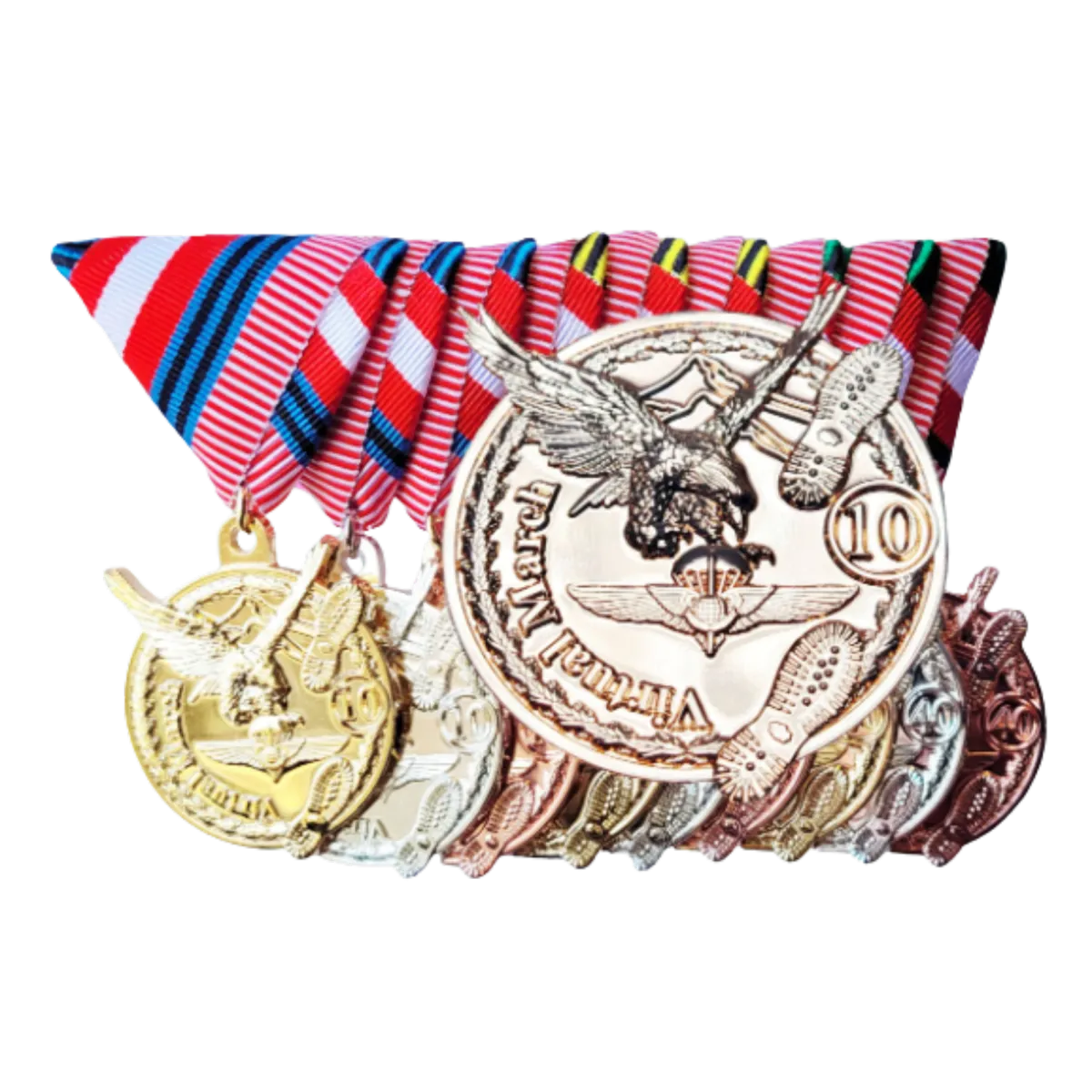
Austrian
Virtuelle Ruck
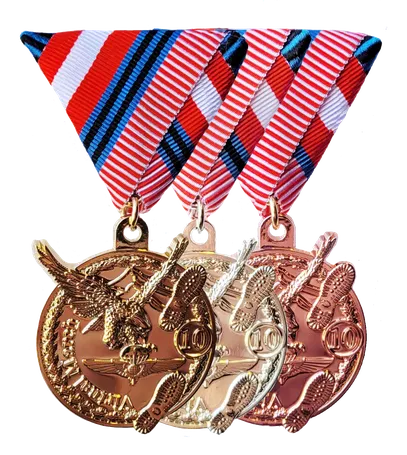
10km Virtuelle Marche
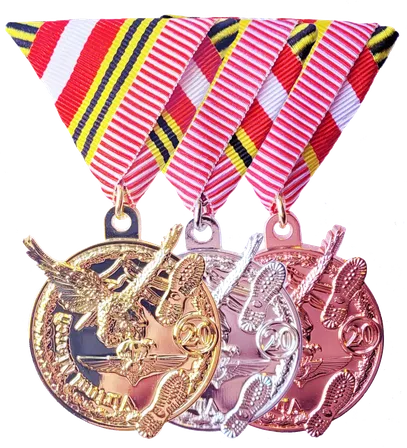
20 km Virtuelle Marche
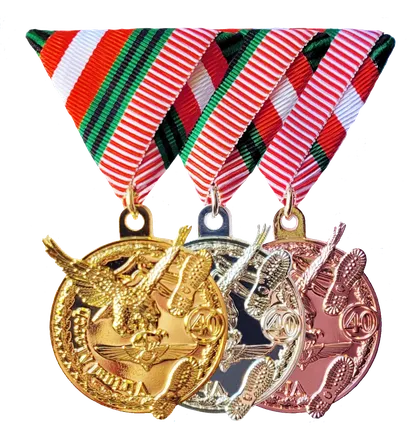
40 km Virtuelle Marche
The Virtual March is a flexible distance challenge allowing participants worldwide to complete marches remotely and still earn the official medal and certificate.
Distances & Medal Awards
Participants can complete marches of 10 km, 20 km, or 40 km.
Medals are awarded upon validated submission of a GPS track (from a fitness or walking app).
The track must:
• Be personalized (linked to the participant)
• Have the date
• Show the completed route
• Be submitted to the organizing address (e.g. by email)
Only marches completed from March 2023 onward are eligible.
Levels and Upgrades
Each successive march increases the class or “stepping” of the award:
1st march: Bronze
2nd march: Silver
3rd march: Gold
4th march: Gold plus pendant / stage 1, then additional pendants up to stage 10 at the highest level.
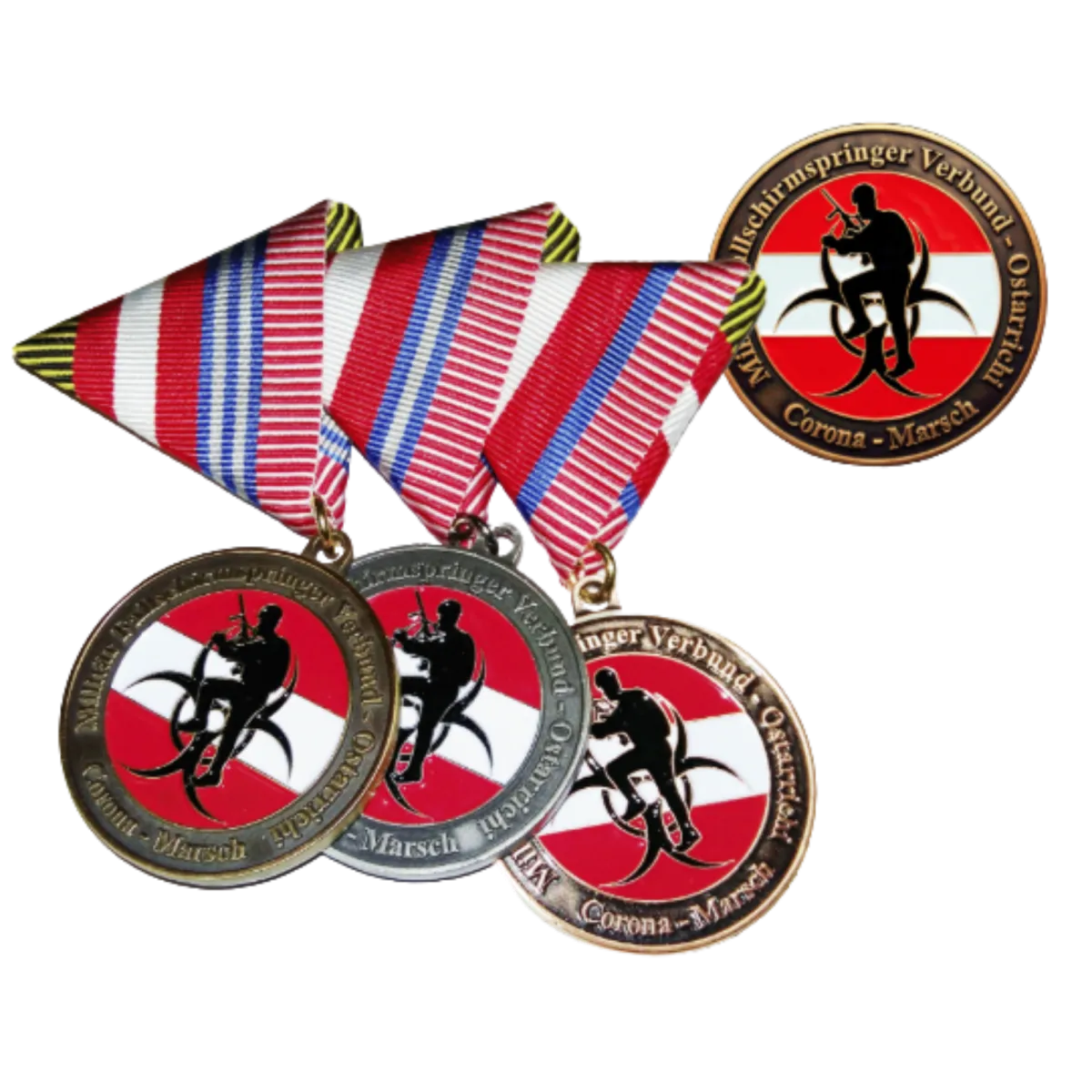
Austrian
COVID Virtuelle Marche
Purpose and Significance
The Virtual March was created by MILF-O (Military Friendship Organization Austria) to give soldiers, veterans, and civilians the opportunity to continue the tradition of military marches even when distance, duty schedules, or global circumstances (such as the COVID-19 pandemic) prevent participation in physical, in-person events.
It ensures that the values behind the march tradition — discipline, endurance, camaraderie, and international military friendship, remain accessible to anyone, anywhere in the world.
By allowing participants to complete the march individually, on their own route and timeline, the Virtual March maintains the spirit of international military sport while also adapting to modern realities of deployment, training restrictions, and global travel limitations.
The medal and certificate awarded for successful completion not only mark the physical achievement of distance (10 km, 20 km, or 40 km), but also symbolize inclusion in a shared community of service members and supporters who honor military tradition regardless of location.
In this sense, the Virtual March was created both as a practical solution, keeping march traditions alive in times of disruption, and as a symbolic gesture, reaffirming that endurance, remembrance, and fellowship transcend national borders or physical obstacles.
